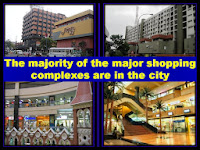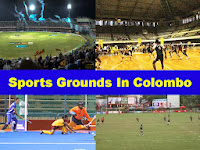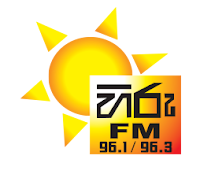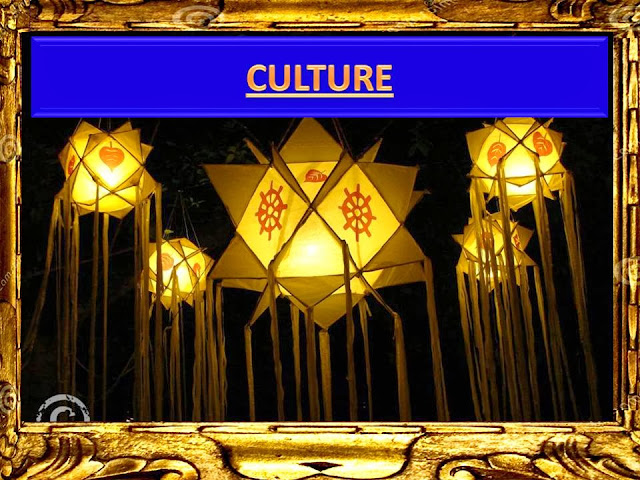Sri Lankan web site with details of Colombo and options to listen Sri Lankan Radio Chanels
Thursday, October 31, 2013
Wednesday, October 30, 2013
Tuesday, October 29, 2013
Sunday, October 27, 2013
Visit Colombo with Verry Importent Information and Listen Fm Radio
Witness the beauty of Colombo and Listen to the famous Radio in Sri Lanka
Y Fm
Sirasa Fm
Neth Fm
Siyatha Fm
Isira Fm
Ran Fm
Shree Fm
VISIT COLOMBO
INTRODUCTION
1. Colombo is
the largest city and the commercial, industrial
and cultural capital of Sri Lanka. It is located on the west coast of the island and near
to Sri Jayawardenapura
Kotte suburb
or the parliament capital of Sri Lanka. It is also the administrative capital
of Western Province, and the district capital
of Colombo District.
2. It is often referred to as the capital since Sri Jayawardenapura Kotte is a satellite city of Colombo. It is a busy and vibrant place with a mixture of modern life and colonial buildings and ruins with a population of about 642,163 in the city limits. It was the political capital of Sri Lanka, before Sri Jayawardenapura Kotte.
History
4. As
Colombo possesses a natural harbour, it was known to Greeks, Persians, Romans, Arabs, and Chinese traders over 2,000 years ago.
Traveller Ibn Batuta who visited the island in the
14th century, referred to it as Kalanpu.

 5. Muslim
Moors whose prime interests were trade began to settle in Colombo around the
8th century mostly because the port helped their business and controlled much
of the trade between the Sinhalese kingdoms and the outside world. Their descendants now
comprise the local Sri Lankan Moor community.
5. Muslim
Moors whose prime interests were trade began to settle in Colombo around the
8th century mostly because the port helped their business and controlled much
of the trade between the Sinhalese kingdoms and the outside world. Their descendants now
comprise the local Sri Lankan Moor community.
GEOGRAPHY AND CLIMATE
6. Colombo's
geography is a mix of land and water. The city has many canals and, in the
heart of the city, the 65-hectare. Beira Lake is one of the most distinctive landmarks of Colombo, and
was used for centuries by colonists to defend the city. It remains a
popular attraction, hosting regattas, and theatrical events on its shores. The Northern and North-Eastern border
of the city of Colombo is formed by the Kelani River, which meets the sea in a part of the city known as the
Modera which means river delta.
7. Colombo
features a tropical monsoon
climate. It's
climate is fairly temperate all throughout the year. From March to April the
temperature averages around 30 degrees Celsius maximum. The only major
change in the Colombo weather occurs during the monsoon seasons from May to August and October to January.
This is the time of year where heavy rains can be expected. Colombo sees little
relative diurnal range of temperature, although this is more marked in the
drier winter months, where minimum temperatures average 22 degrees Celsius.
Rainfall in the city averages around 2,400 millimeters a year.

DEMOGRAPHICS
8. Colombo is a
multi-ethnic, multi-cultural city. The population of Colombo is a mix of
numerous ethnic groups, mainly Sinhalese, Sri Lankan Muslims, and Tamils. There are also small communities
of people with Chinese, Portuguese, Dutch, Malay, and Indian origins living in the city, as
well as some European also. It is the most populous city in Sri Lanka, with
642,163 people living within the city limits. In 1866 the city had a
population of around 80,000. According to the census of 2012 the
demographics of urban Colombo by ethnicity is as shown on screen.

INFRASTRUCTURE
 9. Colombo
has most of the amenities that a modern city has. Compared to other parts of
the country, Colombo has the highest degree of infrastructure. Electricity,
water and transport to street lamps and etc. have a considerably good standard.
The majority of the major shopping complexes are in the city. Apart from that,
many luxurious hotels, clubs and restaurants are in the city. In recent times
there's been an outpour of high condominiums, mainly due to the very high land prices
9. Colombo
has most of the amenities that a modern city has. Compared to other parts of
the country, Colombo has the highest degree of infrastructure. Electricity,
water and transport to street lamps and etc. have a considerably good standard.
The majority of the major shopping complexes are in the city. Apart from that,
many luxurious hotels, clubs and restaurants are in the city. In recent times
there's been an outpour of high condominiums, mainly due to the very high land prices  10. Colombo Harbour is the largest and one of the busiest port in Sri Lanka. Colombo was
established primarily as a port city during the colonial era, with an
artificial harbour that has been expanded over the years. The Sri Lanka Navy maintains a naval base, within the harbour.
10. Colombo Harbour is the largest and one of the busiest port in Sri Lanka. Colombo was
established primarily as a port city during the colonial era, with an
artificial harbour that has been expanded over the years. The Sri Lanka Navy maintains a naval base, within the harbour.
11. The
Port of Colombo handled 3.75 million twenty-foot
equivalent units in
2008. Of those, 817,000 were local shipments with the rest transshipments. The
port is close to its capacity for container handling. An expansion project, the
South Harbour project, will increase the port's capacity

 12. Airports. Bandaranaike
International Airport and Ratmalana
International Airport are
the city's airports. Bandaranaike Airport serves the city for most
international flights, while the Ratmalana Airport primarily serves local
flights.
12. Airports. Bandaranaike
International Airport and Ratmalana
International Airport are
the city's airports. Bandaranaike Airport serves the city for most
international flights, while the Ratmalana Airport primarily serves local
flights.
 13. Roads.
Post-war development in the Colombo area also involves the construction of
numerous expressway grade arterial road routes. The first of these constructed
is the Southern
Expressway, which
goes from southern suburb of Colombo, to Matara in the south of the country. Expressways under
construction in the Colombo metropolitan area include the Colombo to
Katunayake Expressway which
is due to be opened at the end of 2012 and the Colombo orbital bypass Expressway which is due to be opened in
2014.
13. Roads.
Post-war development in the Colombo area also involves the construction of
numerous expressway grade arterial road routes. The first of these constructed
is the Southern
Expressway, which
goes from southern suburb of Colombo, to Matara in the south of the country. Expressways under
construction in the Colombo metropolitan area include the Colombo to
Katunayake Expressway which
is due to be opened at the end of 2012 and the Colombo orbital bypass Expressway which is due to be opened in
2014.
OTHER TRANSPORT
 14. Colombo
has an extensive public transport system based on buses operated both by private
operators and the government owned. Train transport in the city is limited since most trains
are meant to transport inter cities. However, the Central Bus Stand and Fort
Railway Station function
as the island’s primary hub for bus and rail transport respectively. Up until
the 1970s the city had tram services, which were discontinued.
14. Colombo
has an extensive public transport system based on buses operated both by private
operators and the government owned. Train transport in the city is limited since most trains
are meant to transport inter cities. However, the Central Bus Stand and Fort
Railway Station function
as the island’s primary hub for bus and rail transport respectively. Up until
the 1970s the city had tram services, which were discontinued.
5. Other means of
transport includes auto rickshaws (commonly called “three wheelers”) and taxicabs. Three wheelers are entirely operated by individuals and
hardly regulated whilst cab services are run by private companies and are
metered.

EDUCATION
16. Education
institutions in Colombo have a long history. Colombo has many of the
prominent public schools in the country, some of them
government-owned and others private. Most of the prominent schools in the city
date back to the 1800s when they were established during the British colonial
rule, such as the Royal College
Colombo (1835).
17. Certain urban
schools of Sri Lanka have some religious alignment, this is partly due to the
influence of British who established Christian missionary schools. These
include the Bishop's College(1875). After that the Buddhist, Ananda College (1886) and Nalanda College (1888) the Muslim, Zahira College (1892), the Catholic, St. Joseph's College (1896). The religious
alignments do not affect the curriculum of the school except for the
demographics of the student population.
18. Higher education
in the city has a long history, beginning with the establishment of the Colombo Medical
College (1870),
the Colombo Law College (1875), School of Agriculture
(1884) and the Government Technical College (1893). The first step in the
creation of a University in Colombo was taken in 1913.
ARCHITECTURE
19. Colombo has
wildly varying architecture that span centuries and depict many styles. Colonial buildings influenced by
the Portuguese, Dutch and British exist alongside structures
built in Buddhist, Hindu, Islamic, Indian and Contemporary architectural styles. No other
place is this more evident in the Fort area. Here one may find new constructions
as well as historic buildings dating far back as the 1700s
Colombo fort
Dutch-era buildings
British-era buildings
Modern architect
CULTURE
20. Colombo's most
beautiful festival is the celebration of Buddha's birth, enlightenment and death all falling on the same
day. In Sinhala this is known as Vesak. During this festival, much of
the city is decorated with lanterns, lights and special displays of light
(known as thoran). The festival falls in mid May and lasts a week. Many
Sri Lankans visit the city to see the lantern competitions and decorations.
During this week people distribute, rice, drinks and other food items for free
in dunsal which means charity place. These dunsal are
popular amongst visitors from the suburbs.
21. Since there is a
large number of Muslims in Colombo, Eid Ul Fitr and Eid Ul Adha are two Islamic
festivals that are celebrated in Colombo. Christmas is another major festival.
Although Sri Lanka's Christians make up only just over 7% of the population,
Christmas is one of the island's biggest festivals. Most streets and commercial
buildings light up from the beginning of December and festive sales begin at
all shopping centres and department stores.
 22. Colombo has several performing arts centers which are popular for their musical and
theatrical performances. The most famous performing arts centers are the Lionel Wendt Theatre, the Elphinstone, and Tower Hall,
all of which have a very rich history and made for western style productions.
The Navarangahala found in the city is the
country's first national theatre designed and build for Asian
and local style musical and theatrical productions.
22. Colombo has several performing arts centers which are popular for their musical and
theatrical performances. The most famous performing arts centers are the Lionel Wendt Theatre, the Elphinstone, and Tower Hall,
all of which have a very rich history and made for western style productions.
The Navarangahala found in the city is the
country's first national theatre designed and build for Asian
and local style musical and theatrical productions.
23. The Nelum
Pokuna Performing Arts Theatre is a world-class theatre that opened in December 2011. Designed in the form of the
Lotus Pond in Polonnaruwa, the theatre is a major theatre
destination. And the same time modern Weston culture also not less.
MUSEUMS AND ART COLLECTIONS
 24. The National Museum of
Colombo,
established on 1 January 1877 during the tenure of the British Colonial
Governor Sir William Henry
Gregory, is in
the Cinnamon Gardens area. The museum houses the crown jewels and throne of the last king of the kingdom of
Kandy, Sri Vikrama
Rajasinha
24. The National Museum of
Colombo,
established on 1 January 1877 during the tenure of the British Colonial
Governor Sir William Henry
Gregory, is in
the Cinnamon Gardens area. The museum houses the crown jewels and throne of the last king of the kingdom of
Kandy, Sri Vikrama
Rajasinha
SPORTS
 25. Undoubtedly the
most popular sport in Sri Lanka is cricket. Colombo is the home for cricket and other sports
also.Country's most popular international
cricket stadiums, Sinhalese Sports
Club's cricket stadium and R. Premadasa Stadium
stablished in Colombo. And also rugby grounds, hokey stadiums and Sri Lanka
National Indoor stadium also established here.
25. Undoubtedly the
most popular sport in Sri Lanka is cricket. Colombo is the home for cricket and other sports
also.Country's most popular international
cricket stadiums, Sinhalese Sports
Club's cricket stadium and R. Premadasa Stadium
stablished in Colombo. And also rugby grounds, hokey stadiums and Sri Lanka
National Indoor stadium also established here.OFFICIAL VISION & MISSION
Vision.
Colombo being a model city in Asia, a caring organization looking after
interests of citizens and users with an efficient quality service for creation
of safe, healthy and wealthy life.
Mission Organization achieving excellence in
providing citizen cantered services to the public, customer, optimizing the use
of available resources through a competent, motivated and dedicated team.
Subscribe to:
Comments (Atom)


























